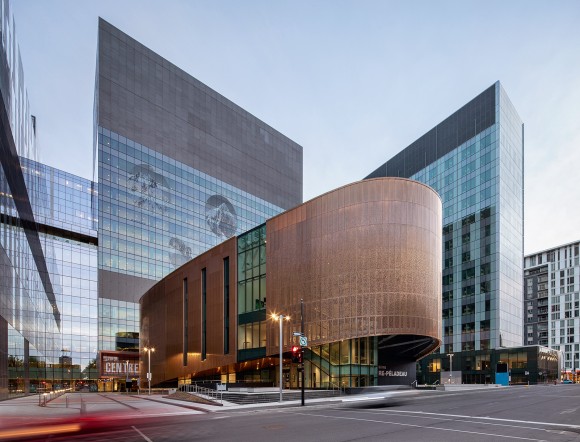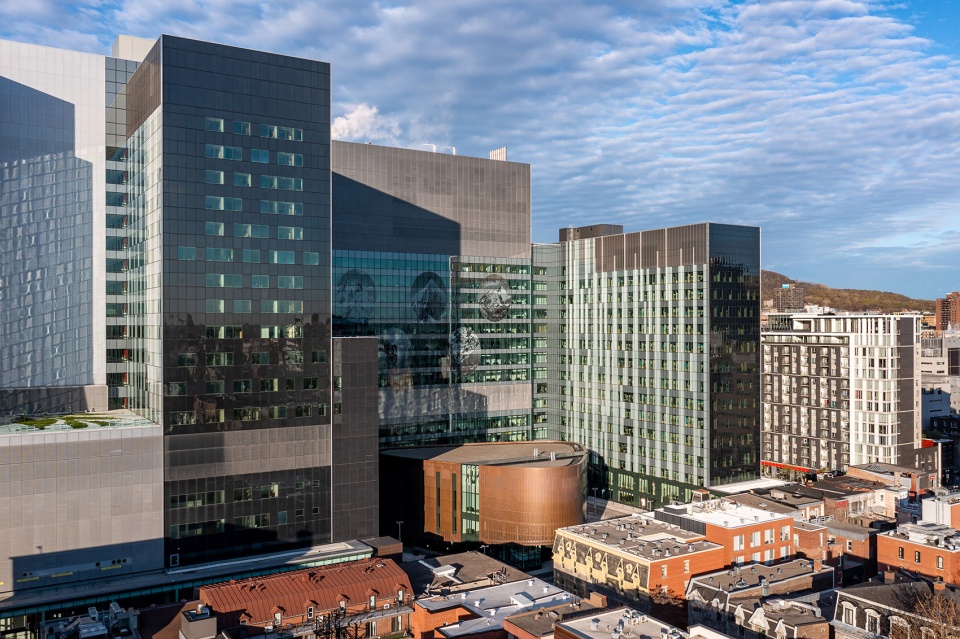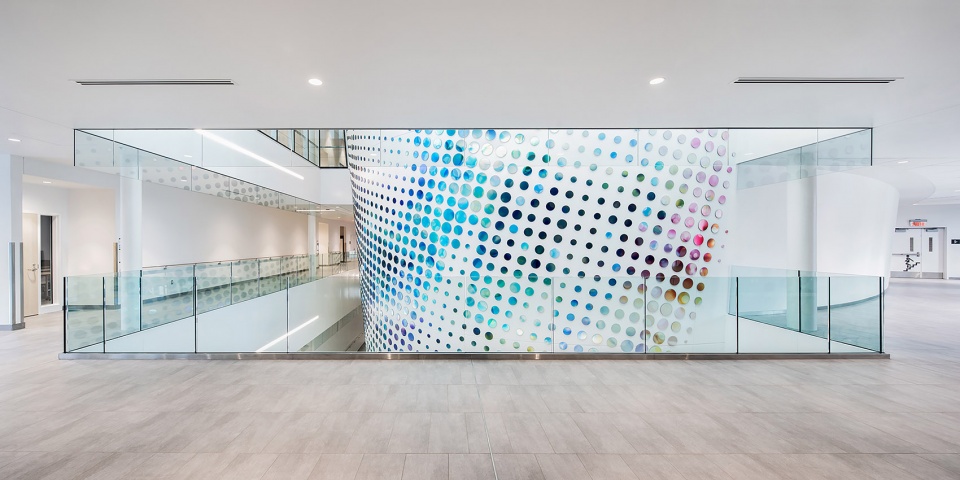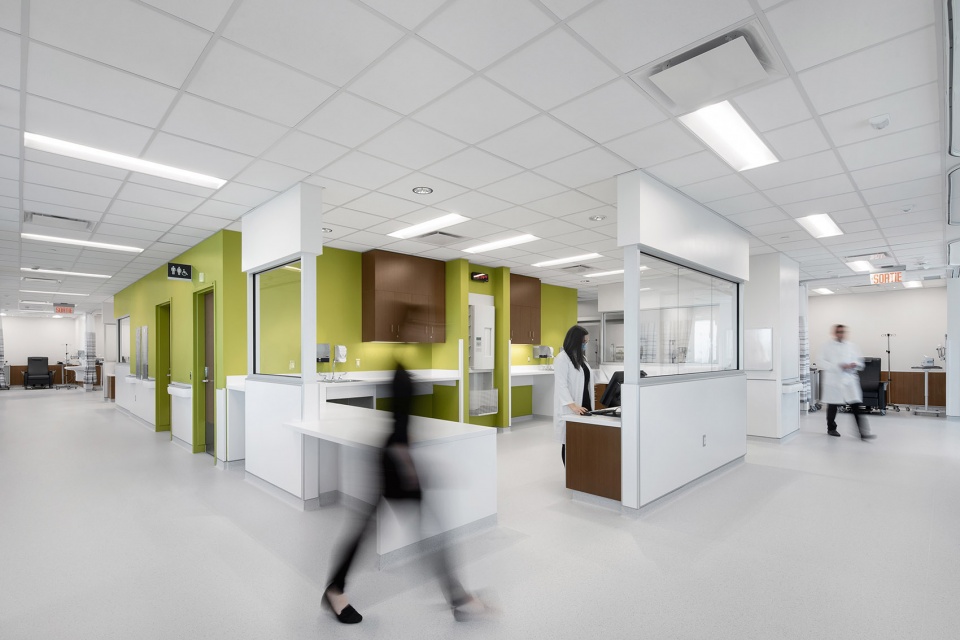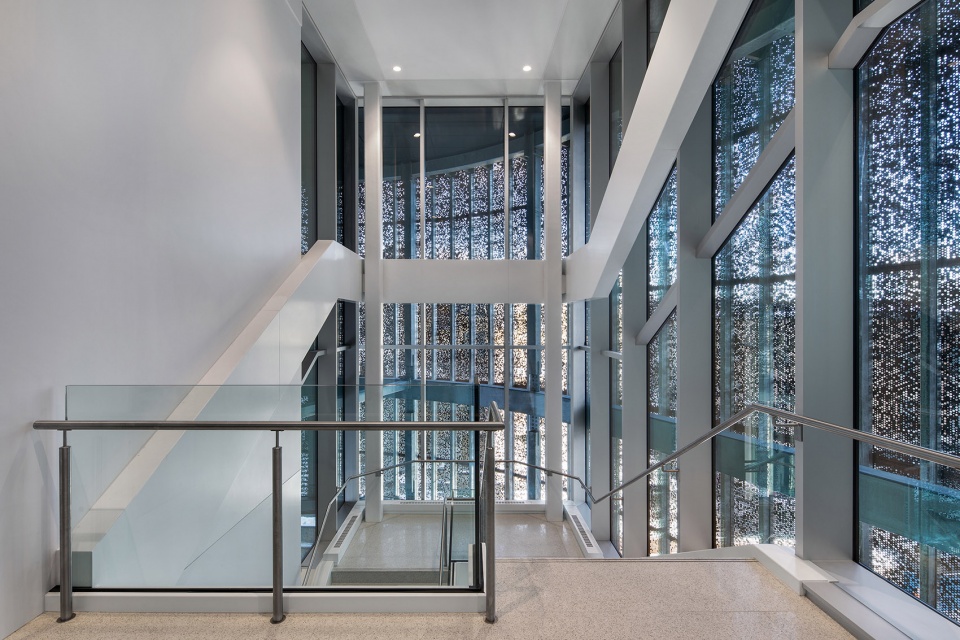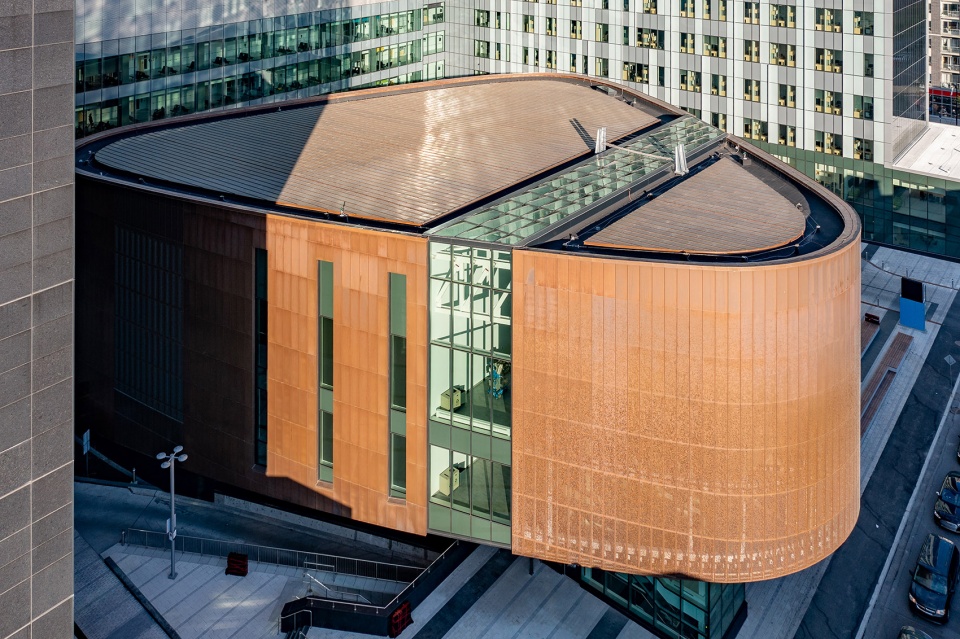
CHUM Hospital Complex / Jodoin Lamarre Pratte architect, MSDL Menkès Shooner Dagenais LeTourneux Architectes
The second phase of the complex project of the University of Montreal Health Center (CHUM) was completed last June. This last phase, designed by the two Canadian firms Jodoin Lamarre Pratte architectes and MSDL Menkès Shooner Dagenais LeTourneux Architectes winners in 2018 of the competition for the finalization of the design, execution and supervision of the works – follows the construction of the Research Center in 2013 and the first phase in 2017, designed by CannonDesign and NEUF architect(e)s, responsible of the entire hospital project, today considered one of the largest and most important in North America.

Integrated into a dense urban environment, the CHUM Health Center has become one of the symbols of the regeneration of the busy eastern quadrangle of downtown Montréal, now better known as Quartier de la Santé, and will increasingly become an important key engine of economic growth for the entire Province of Quebec.

While the first phase saw in 2017 the completion of the 85 percent of the program, with the construction of three towers housing outpatient clinics, 772 inpatient rooms and one of Canada’s largest cancer treatment centers, the recently completed second phase, whose heart is the Pierre-Péladeau Amphitheatre, a 5,582 sqm building on three floors, includes, in addition to the amphitheater, offices, a library, medical archives and other ambulatory spaces.

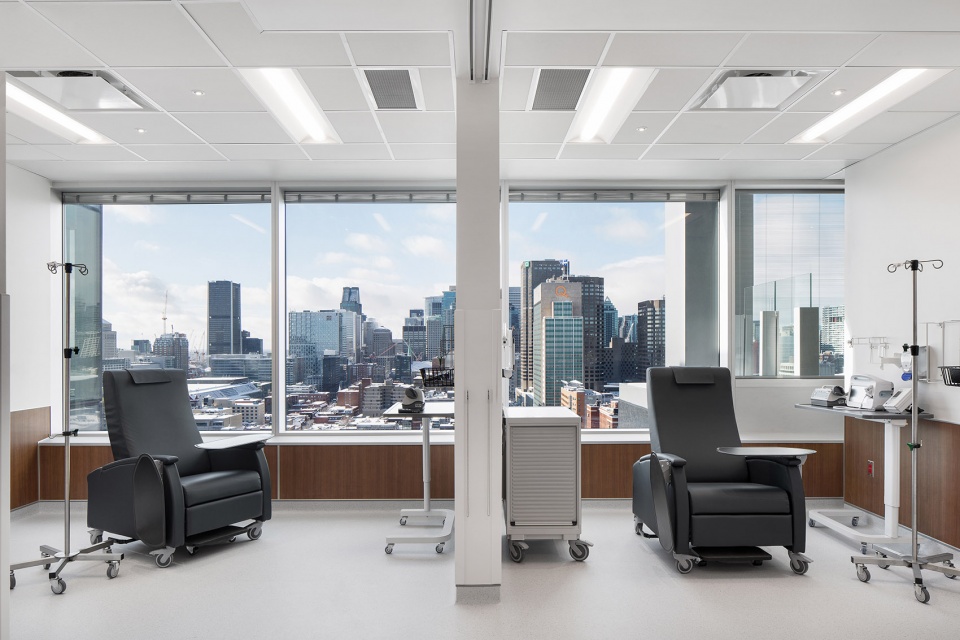
Surrounded by a large public square leading to the main entrance of the CHUM, the new organic building was designed to encourage collaboration and the sharing of knowledge aimed at creating a more ethical and human -centric future. Sitting at the foot of the surrounding medical towers, the building is wrapped in perforated copper sheeting that artfully reflects the sunlight during the day and emits a warm glow at night. For the envelope, copper has been chosen because, in addition to being a noble, bacteriostatic and durable material, it is reminiscent of the roofs of several emblematic institutional buildings in Montreal and elsewhere in Quebec.
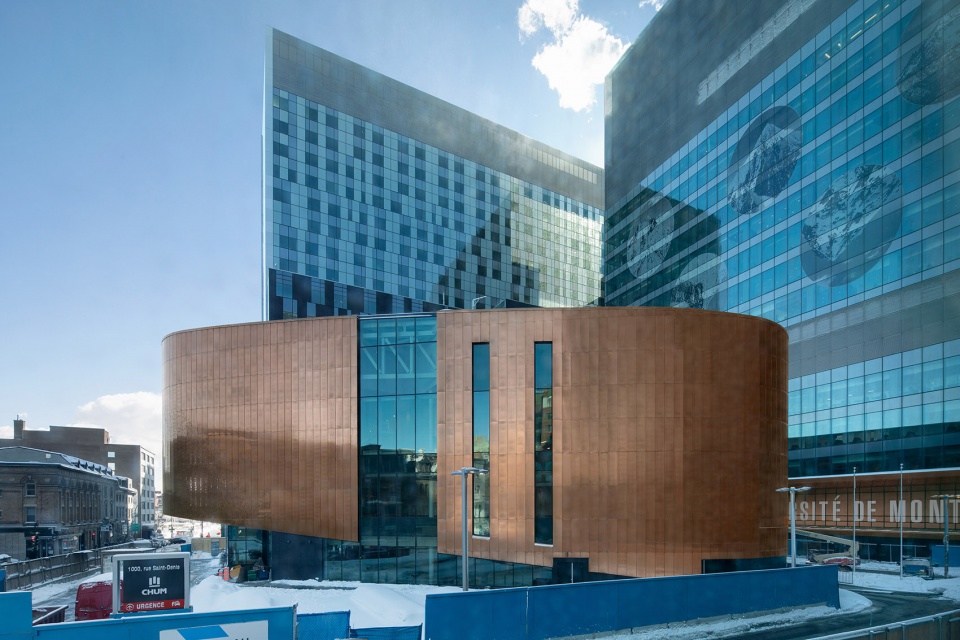
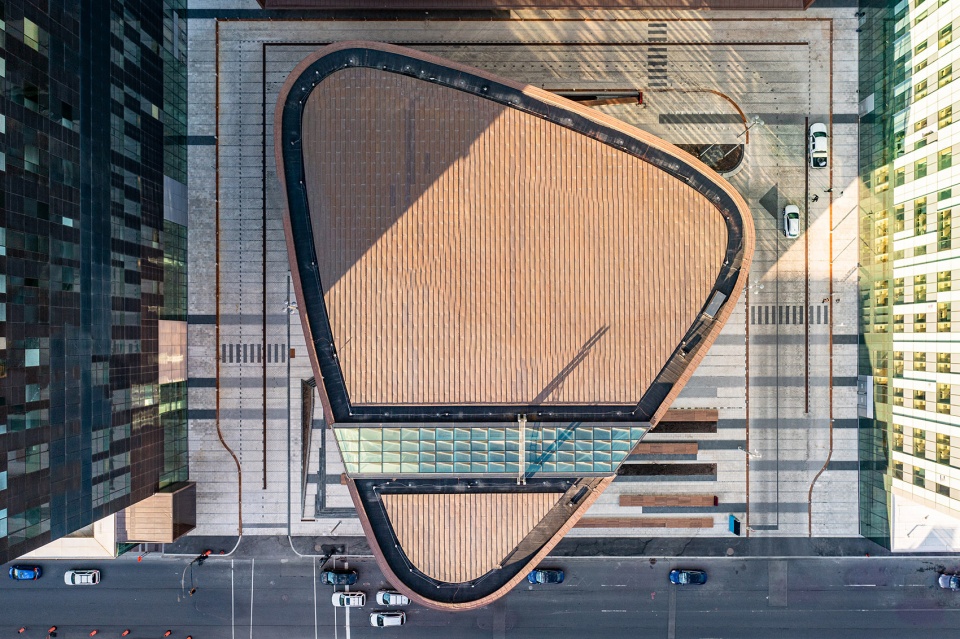
The large multifunctional Auditorium, whose interiors were initially designed with fixed bleachers and then redesigned to integrate retractable bleachers, can accommodate 365 people in its standard configuration, while in cabaret mode, it offers nearly 150 seats. In addition to the Auditorium, the building also houses five modular meeting rooms – whose movable walls allow for the configuration of up to 10 meeting rooms – where acoustic is ensured by the use of triple glass.
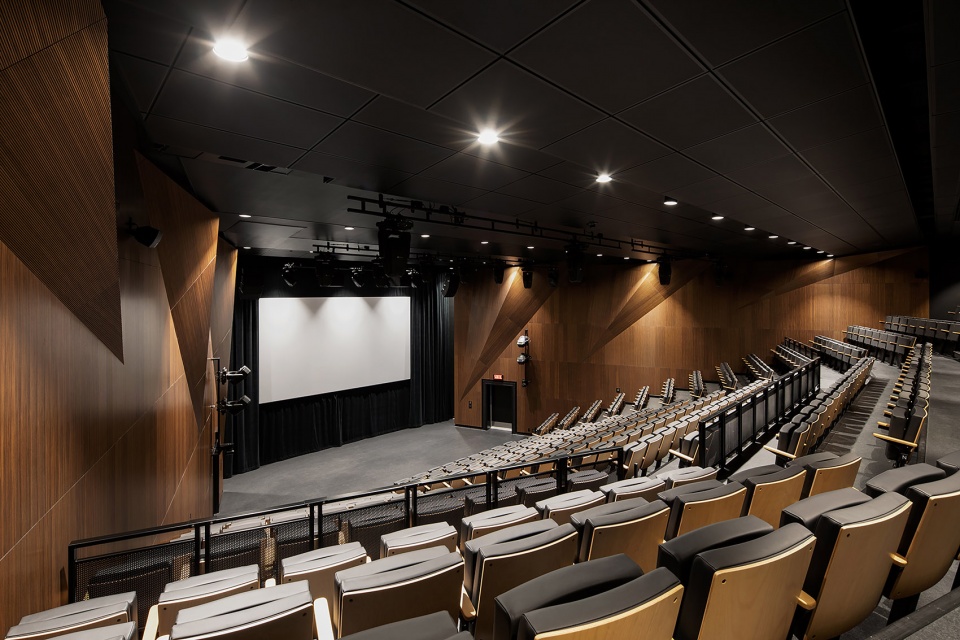
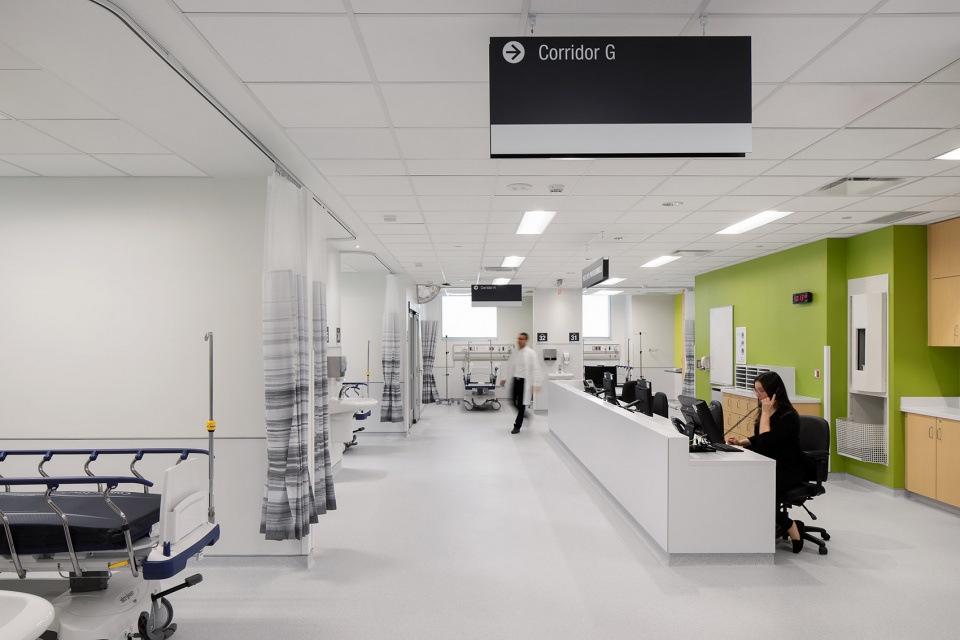
A veritable structural feat, the building’s volume and large spans were achieved through a complex load-bearing frame and cantilevered shell and floors. Integrated above the underground parking lot, surrounded by a perimeter circulation path with access to the parking lot and equipped with a full-width glass skylight on the roof, this Amphitheatre was the source of many architectural and engineering challenges and required great mastery in both design and execution.

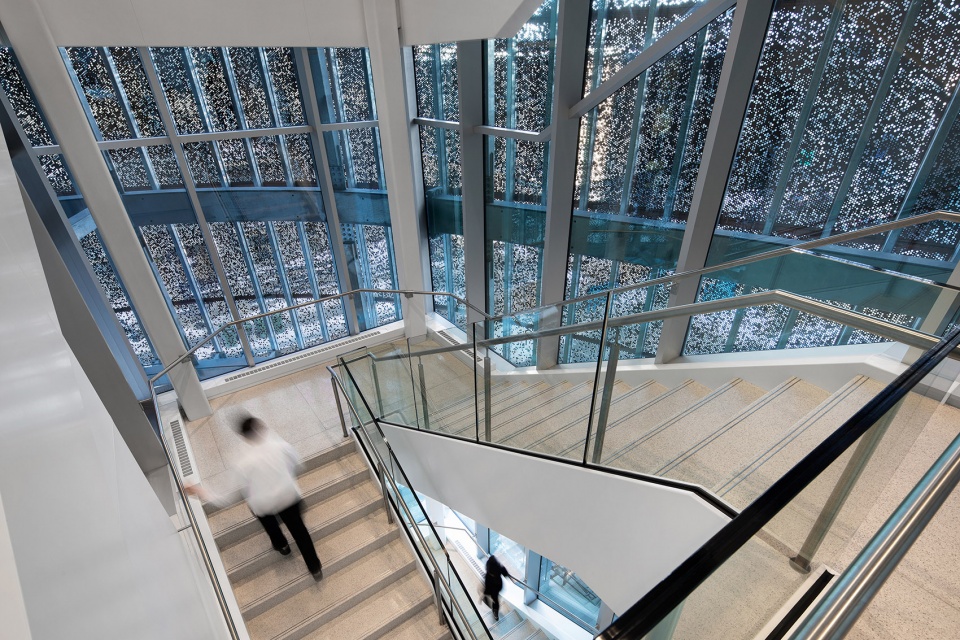
Aiming for LEED Silver certification, this new facility integrates the most advanced technologies in the world and creates a care and research environment that puts people and their frailties at the heart of every activity.

